February itinerary in Japan Day 4 (Tottori prefecture)
(Saturday, February 26)
Table of contents
2. Tottori Station / Kurayoshi Station
3. Kurayoshi Shirakabe Dozo-gun
1. Tottori Sand Dunes
I took a bus from Tottori Station to Tottori Sand Dunes on the morning of February 26. The buses I used are as follows.
Depart Tottori Station 9:10, 39 Tottori Sand Dunes Line “bound for Sand Dunes Hall”, arrive at Sand Dunes Hall 9:32, fare Yen 380
Tottori Sand Dunes is about a 1-minute walk from the Sand Dunes Hall.
Tottori Sand Dunes is a tourist destination that represents Tottori prefecture, and I have visited it several times. However, this was my first winter visit. The Tottori Sand Dunes is a vast sand dune 2.4km north-south and 16km east-west. It is the largest sand dune in Japan that can be visited. It has been selected as a national natural monument.
Although the Tottori Sand Dunes in winter had a little snow, it wasn’t completely piled up, so the scenery was not good. There was a lot of snow in Tottori city, but is it because of the wind that the Tottori sand dunes are not completely covered with snow? The Tottori Sand Dunes are famous for their strong winds. Especially, the winter wind is strong. There was a pretty strong wind on the day I went. Originally, the Tottori Sand Dunes was formed by the accumulation of sand carried by the wind.
The reason why I was glad to visit the Tottori Sand Dunes in winter this time is, of course, that it is not hot. The surface temperature of Tottori Sand Dunes sometimes exceeds 60 degrees Celsius in August, and it is hot and difficult like the deserts in Africa. In fact, in August 2020, a tourist in his 40s died of heat stroke in the Tottori Sand Dunes. Going to the Tottori Sand Dunes in the summer when the whole of Japan is tropical is becoming a suicidal act, so it is recommended to go in the winter (at least not in the summer).
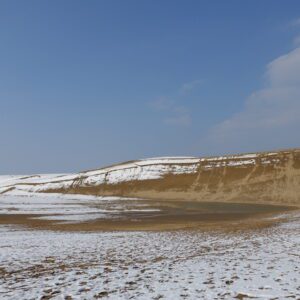
There is also an oasis near the sand dunes called “the Umanose (back of a horse)”.
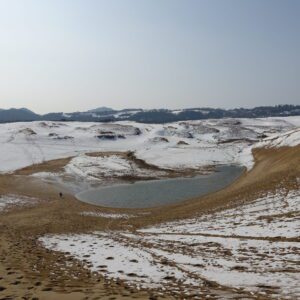
There was no snow on the dunes on the sea side.

There are also camels for tourists in the Tottori Sand Dunes. Camels were brought to the Tottori Sand Dunes in 1960. It costs Yen 1,500 yen for one person and Yen 2,600 for two people to ride a camel. However, two adults cannot ride.
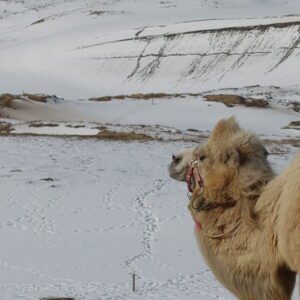
There was a sand sculpture of the cartoon and anime “Children of the Whales Sing on the Sand” at Sakyu Center View Hill.
I wanted to go to the Sand Museum, but it was closed for maintenance from February 1st to 28th, 2022. The Sand Museum is a museum that exhibits “sand statues”, which are sculptures made from “sand”. It opened in November 2006. The museum invites sand sculptors from overseas to make “sand statues”.
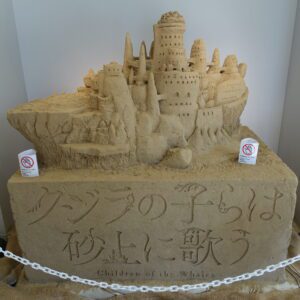
The Tottori Sand Dunes is also one of Japan’s leading producers of scallions. At the Tottori Sand Dunes, you can see the blooming scallions all over from late October to early November. Tottori Prefecture has the highest production of scallions in Japan (2019). The second place is Kagoshima prefecture, and the third place is Miyazaki prefecture.
2. Tottori Station / Kurayoshi Station
I took a bus back from Tottori Sand Dunes to Tottori Station. The buses I used are as follows.
Depart the east exit of the sand dunes at 11:06, 33 Iwami Iwai Line “bound for Tottori Station”, arrive at Tottori Station at 11:26, fare Yen 380
Tottori Station is not only the departure and arrival station of JR West, but also the Wakasa Railway. However, to be exact, the JR West Inami Line runs from Tottori Station to Koge Station, and the Wakasa Railway runs from Koge Station to Wakasa Station. The vehicle of Wakasa Railway is a one-car train such as the green “Wakasa” and the red “Yazu”, but it has the exterior and interior design of the sightseeing train. In addition, there are blue “Showa” and motorcycle “Hayabusa” wrapping trains.
I think it’s a very good idea to attract with design, even though it is a local route that suffers from a deficit. The next time I come to Tottori prefecture, I would like to take the Wakasa Railway.


On the other hand, I boarded the limited express “Super Matsukaze No. 5” from Tottori Station to Kurayoshi Station. It’s not very cool compared to Wakasa Railway. The limited express “Super Matsukaze No. 5” that I boarded is as follows.
Depart Tottori Station at 11:40, Limited Express Super Matsukaze No. 5, arrive at Kurayoshi Station at 12:08, fare Yen 1,970
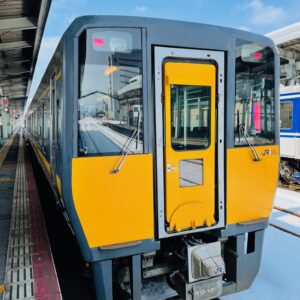
“Detective Conan Train” was also stopped at Tottori Station. I didn’t know it at all, but Tottori Prefecture founded “Manga Kingdom Tottori” in 2012. Tottori Prefecture has a large number of manga artists such as Shigeru Mizuki of “Gegege no Kitaro” (raised in Sakaiminato City), Jiro Taniguchi of “To a Faraway Town” and “A Journal of My Father” (born in Tottori City), and Takemasa Aoyama of “Detective Conan” (Daiei-cho, now Hokuei-cho). “Manga Kingdom Tottori” was created by Tottori Prefecture, which produced many manga artists, for the purpose of promoting tourism, industry, and human resources development. “Detective Conan Train” also has the characters “Manga Kingdom Tottori”.
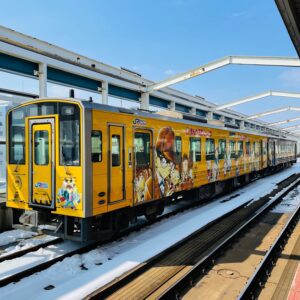
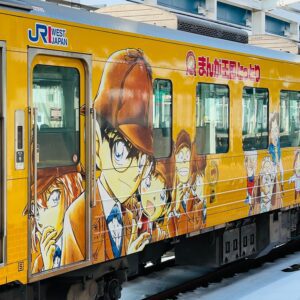
At Kurayoshi Station, there is a large panel of “Hinabita ♪”. Since Kuranogawa City and Kurayoshi City, which are the setting of “Hinabita ♪”, have much in common in terms of historical background and scenery, they entered into a sister city tie-up in April 2016. In addition, Kurayoshi City was the first in Japan to win the “Japanese Anime Sanctuary 88” certification plate sponsored by the Anime Tourism Association. Personally, I don’t think the historical atmosphere of Kurayoshi City matches “Hinabita ♪”, but it would be nice if the number of tourists is increasing.
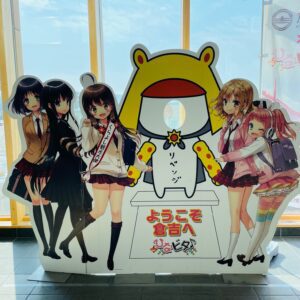
3. Kurayoshi Shirakabe Dozo-gun
I went by bus from Kurayoshi Station to Kurayoshi Shirakabe Dozo-gun. The buses I used are as follows.
Depart Kurayoshi Station at 12:25, Akasaki Line “bound for Akasaki Station”, arrive at Akagawara / Shirakabe Dozo-gun at 12:37, fare Yen 230
The “Kurayoshi City Uchibuki Tamagawa Traditional Buildings Preservation District” has been designated as a National Important Preservation Districts for Groups of Traditional Buildings, centering on Kurayoshi Shirakabe Dozo-gun. The building age consists of several buildings in the late Edo period, about 30% in the middle and late Meiji period, about 20% in the Taisho period, and about 20% in the early Showa period.


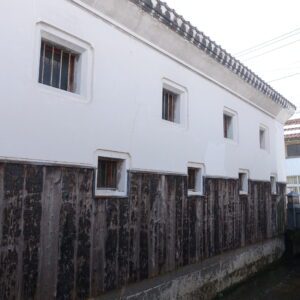
The Kurayoshi Daitenkai (former Kurayoshi Branch of the Third National Bank), which has an unusual two-story structure, is a national registered tangible cultural property. It was built in 1908.
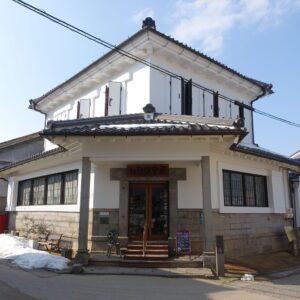
The place in the picture below was used in the scene where Tora-san and Kumiko Goto, who played Madonna, met in “Otoko wa Tsuraiyo Torajiro’s Kokuhaku (Confession)”.
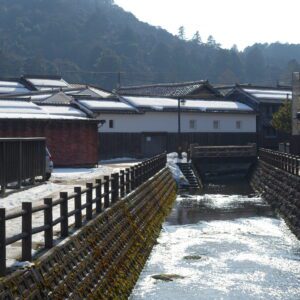
4. Walk around Kurayoshi
In addition to Kurayoshi Shirakabe Dozo-gun, there are many retro Showa buildings in Kurayoshi, and it was a fun city to walk around. I think it’s a city where you can immerse yourself in the nostalgic Showa atmosphere with the signboards of the stores.

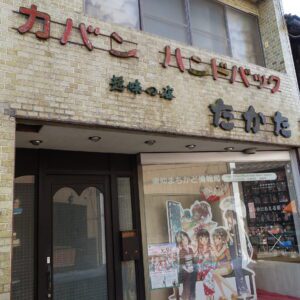
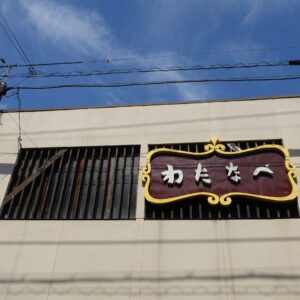

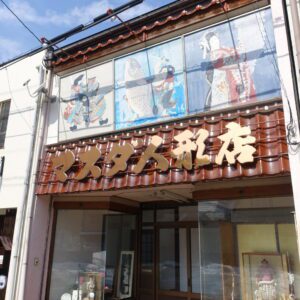
The colors used by the toy store “Taira Shoten” and the robots from the Sentai series were very nice. It was a robot of Chouriki Sentai Ohranger that was broadcast from 1995 to 1996.
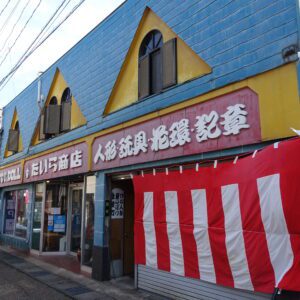

The sewing machines at Ando Sewing Machine Co., Ltd. were quite old.
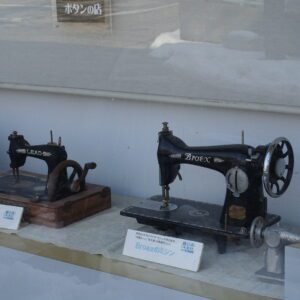
The public bath, Taisha-yu, is a national registered tangible cultural property. It is the oldest existing public bath in Tottori prefecture, which opened around 1907. I couldn’t enter because the business hours were from 16:00 to 21:00, but it is an attractive public bath that I definitely want to enter.
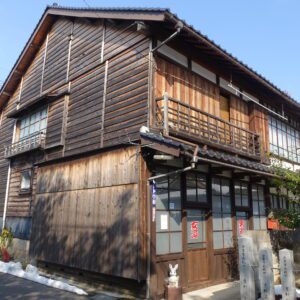
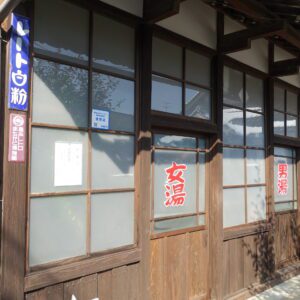
There were many other buildings in Kurayoshi with a nostalgic atmosphere.
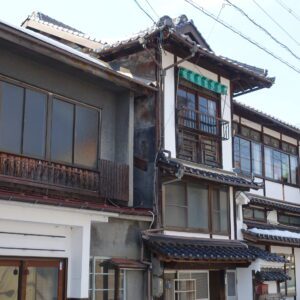

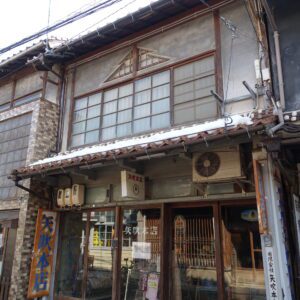
The building in the photo below was built in 1931 as the Kurayoshi branch of the Japan Industrial Savings Bank. It is a Western-style building that is rare in Kurayoshi.
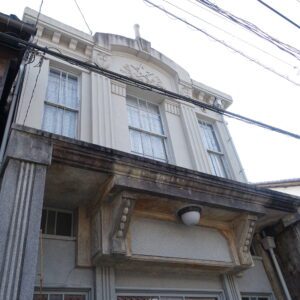
5. Toyoda family residence
The Toyoda family residence is a two-story wooden house built in 1900 and is a traditional Machiya style in Kurayoshi. It is a national registered tangible cultural property. The inside of the Toyoda family’s house and the inner garden are also wonderful. If you go upstairs away from the main building, you will find a red tile storehouse built in 1771.

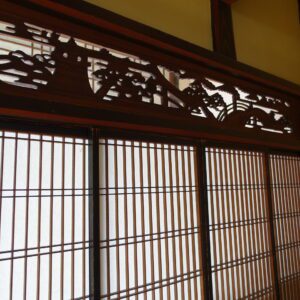
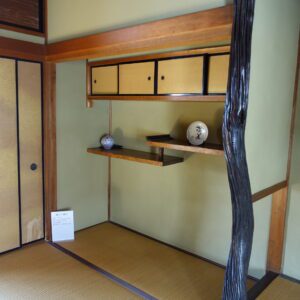
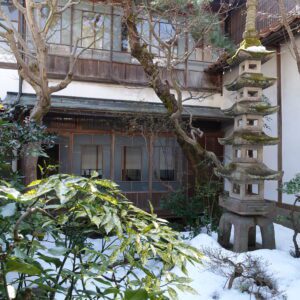

6. Kurayoshi Yodoya
Kurayoshi Yodoya is the oldest existing Machiya building in Kurayoshi City, built in 1760. The Makita family with the name “Yodoya” was a representative merchant house in Kurayoshi. The original “Yodoya” was a big merchant in Osaka, and it provided loans current worth Yen 100 trillion to Daimyo (feudal lord) in various places. It also contributed greatly to the development of the commercial city of Osaka, such as the establishment of the rice market. “Yodoya Bridge” in Osaka is also a bridge built by “Yodoya”.
The property of “Yodoya” was confiscated by the Edo Shogunate, which was afraid of the financial strength of “Yodoya”. However, Yodoya, who had predicted the movement of the Edo Shogunate, was divided into Makita Niemon in Kurayoshi. Niemon Makita was the head of a servant of “Yodoya” in Osaka, and his birthplace was Kurayoshi.
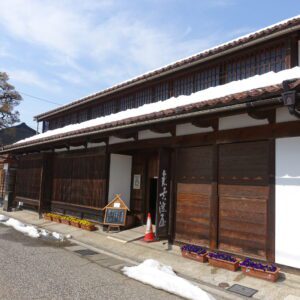
Kurayoshi Yodoya’s financial strength has been revived by its main products, “Inakoki-senba (Tool for threshing of rice)” and “Kurayoshi Kasuri”. Inakoki-senba is a tool used for threshing to squeeze rice grains from the harvested rice ears. With the revived financial strength, they opened a cotton wholesaler “Yodoya Seibei” in Kitahama, Osaka to revive the goodwill.
At the end of the Edo period, “Yodoya” campaigned to defeat the Edo Shogunate, donated most of its property to the imperial court, and relieved the resentment of the property confiscation of the Edo Shogunate.
The interior of Kurayoshi Yodoya is very spectacular. I felt like I could get a glimpse of a part of wealthy merchant.
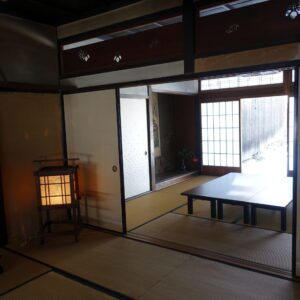
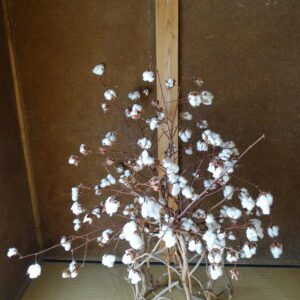

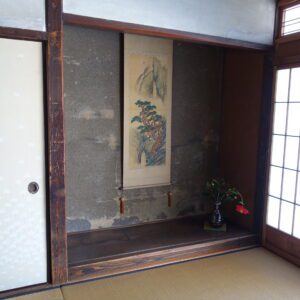
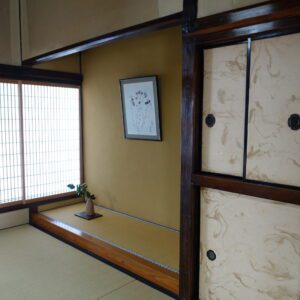
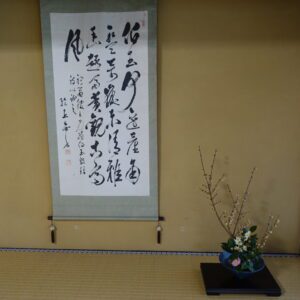


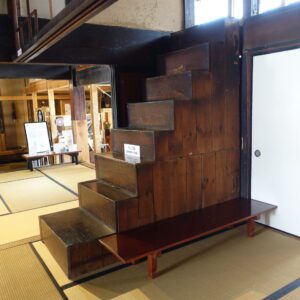
7. Hasedera temple
I went to Hasedera Temple, which is the only national important cultural property in Kurayoshi City. It was founded in 721 in the Nara period with the opening of Hodo.
There was Kurayoshi Kindergarten near the entrance of the mountain road leading to Hasedera temple, and there was a mural called “Suzuki Koji and Children’s Wall”. I like wall art, so I really like the mural at Kurayoshi Kindergarten.


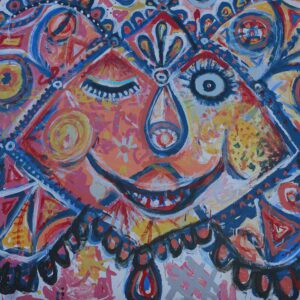
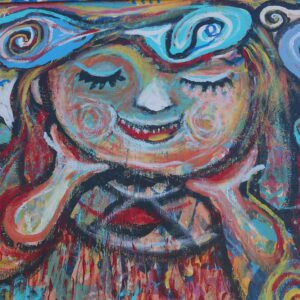
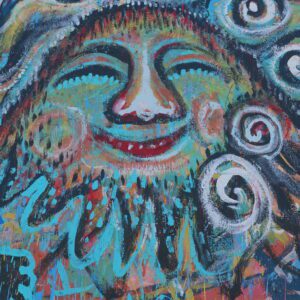
There is a religion shrine near the foot of the mountain road leading to Hasedera temple.

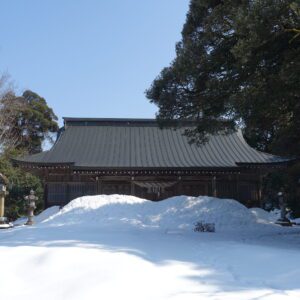
There was a lot of snow on the mountain road leading to Hasedera temple, and it was difficult to walk.

Stone Buddhas are lined up on the approach to the main hall of Hasedera temple.
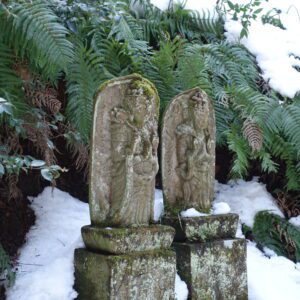

The main hall, which was rebuilt during the Muromachi period (1336-1573), is a “Kakezukuri” building that accommodates steep slopes. “Kakezukuri” is an architectural style in which a building is built on a land with a large height difference such as a cliff by fixing the underfloor with long pillars. “Kakezukuri” is famous for Kiyomizu-dera Temple in Kyoto. I thought that the scenery seen from the main hall would be very beautiful with the autumn leaves.
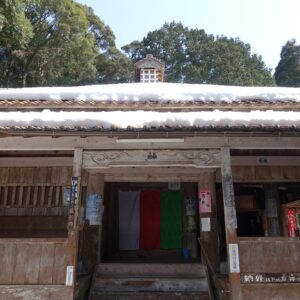
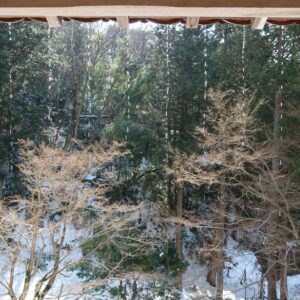
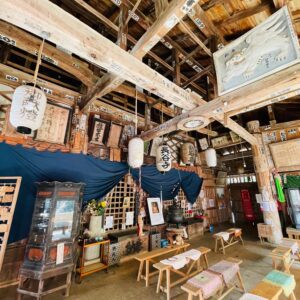
About 20 Japanese monkeys live in Utsubuki Park near Kurayoshi Kindergarten.
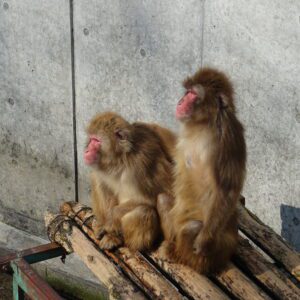
8. Yonago Station
After enjoying a walk in Kurashiki, I took a bus to Kurashiki Station and then took a train to Yonago Station. The public transportation I used is as follows.
Depart at 15:13 Shirakabe Dozo-gun mae, Matsuzaki / Kitakata line “bound for Kitakata iriguchi”, arrive at Kurayoshi Station at 15:30
Depart Kurayoshi Station at 15:40, Super Matsukaze No. 7, arrive at Yonago Station at 16:13, total fare Yen 2,980
There is Platform 0 where the Sakai Line departs and arrives at Yonago Station. JR west operates the “Kitarou Train” because it is the place where the manga artist Shigeru Mizuki grew up in Sakaiminato City. The “Sunakake Baba” train that was stopped this time.

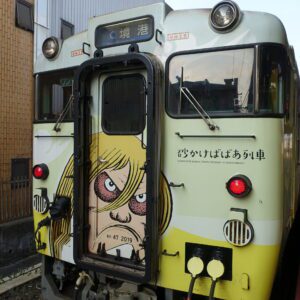
Although it is a “Sunakake Baba” train, many characters that appear in “GeGeGe no Kitaro” such as Kitaro, Neko Musume, and Medama no Oyaji are drawn on the side of the train.

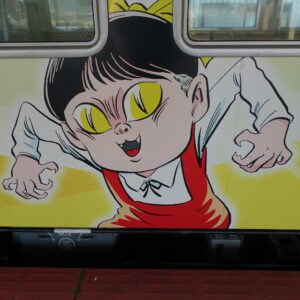
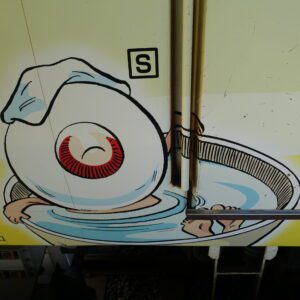
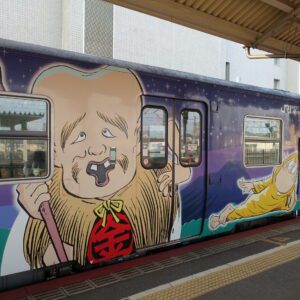
When you leave Yonago Station, you will find “Dandan Square”. The square has a monument to the birthplace of the San’in Railway and a monument that closely resembles Galaxy Express 999. “Dandan” is a dialect of Yonago and means “thank you”.
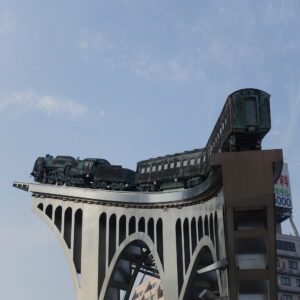
Note: The departure / arrival times, fares of transportation, admission fees, meal fees, etc. listed in the text are as of the time of writing the BLOG. Please check for yourself when you go on a trip as it may change in the future.
